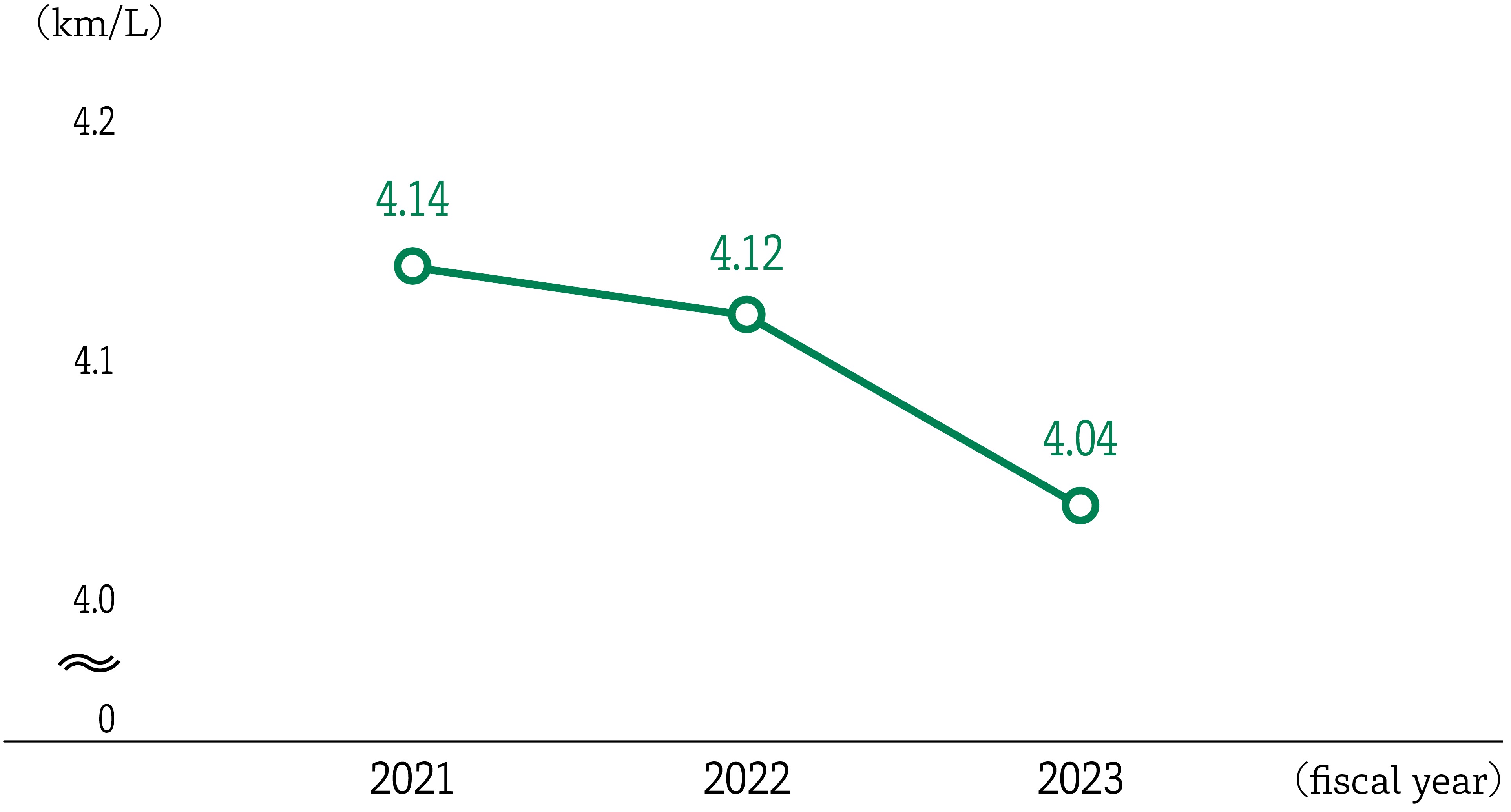EnvironmentContributing to Decarbonization
Basic ApproachBack to Top
TOPPAN has formulated the following basic policies to contribute to decarbonization.
Global climate change has huge impacts on corporate activities and the lives of people around the world. Recognizing this burden, we position contributions to decarbonization as a critical challenge for management. Based on the TOPPAN Group Declaration on the Global Environment, every person in the Group is firmly committed to the creation of a sustainable society and strives to address climate change as a responsible member of the international community.
Energy control and the rational use of energy are our prime approaches to achieving a decarbonized economy. We will also continue to adopt renewable energy sources on a preferential basis and encourage the broad use of renewables across society.
ActivitiesBack to Top
Reducing Greenhouse Gas Emissions
The TOPPAN Group has been reducing the total emissions of carbon dioxide (CO2) and other greenhouse gases (GHGs) to help decarbonize society. To reduce Scope 1 GHG emissions (direct emissions from industrial processes or fuels consumed at the Group), we are systematically replacing utility facilities operated for extended periods with high-efficiency alternatives. Systems are also installed to abate high-global-warming-potential (GWP) gases emitted from semiconductor production processes, and high-GWP gases are switched to lower-GWP alternatives.
To reduce Scope 2 GHG emissions (indirect emissions associated with the consumption of electricity, heating, or cooling purchased or acquired by the Group), we are scaling down power consumption by adopting energy-efficiency measures and renewables such as solar panels. A switch to electricity contracts with lower CO2 emission factors is now being considered.
We are also scaling up the installation of energy-efficient, renewable-energy-driven facilities using carbon prices set under the internal carbon pricing (ICP) system introduced across the Group in fiscal 2023.
Meanwhile, Toppan Logistics Co., Ltd., the logistics specialist for the Group, is working with Group company shippers to optimize transportation conditions and further enhance transportation efficiency. These companies are pooling their efforts to reduce the energy consumption per unit of transport volume by company vehicles and the total volume of CO2 emissions from transport.
As a member of the Japan Federation of Printing Industries (JFPI), TOPPAN Holdings Inc. has driven industry-wide efforts to spawn decarbonization measures, chiefly through its involvement in JFPI activities to address climate change and promote low carbonization. The JFPI’s Working Group for Voluntary Action Plans on the Environment (under the Environmental Management Task Force of the Global Environment Committee) has supported decarbonization efforts across the printing industry by implementing volatile organic compound (VOC)-emission reduction measures and various other measures targeting the realization of a low-carbon, circular economy.
In May 2023, TOPPAN Holdings became a member of the GX League, an industry-government-academia forum established by the Ministry of Economy, Trade and Industry of Japan. This forum advocates for social structural change to achieve Japan’s goal of carbon neutrality by 2050. TOPPAN will drive green transformation (GX) towards the transformation of Japan’s socio-economy in cooperation with other companies, financial institutions, universities, public research institutions, and government bodies. The discussions and knowledge gained at the GX League rule-making working groups reinforce our Groupwide endeavors to address global environmental issues, especially climate change.
Energy Management Programs
As part of efforts to contribute to a decarbonized society, the TOPPAN Group implements energy management by monitoring energy efficiency within the ISO 14001 framework, setting targets, and managing the progress of improvements. Specifically, we monitor and measure energy consumption and implement energy conservation measures. We also assess impact on the environment, set specific targets for energy efficiency improvement, and periodically assess and manage progress towards them.
Through these activities, the organization drives increases in energy efficiency in accordance with the requirements of ISO 14001 and contributes to a decarbonized society. Utilizing the ISO 14001 framework enables continuous improvements and effective energy management.
Energy audits to identify opportunities for improving energy performance
An energy audit is an important technique for evaluating an organization's energy consumption and identifying specific measures for efficiency and reduction. Based on the requirements of the Act on the Rational Use of Energy, the energy audit is conducted by reviewing the energy consumption of each facility and its ratio to the total consumption once a year based on the energy summary table
of each facility. This enables us to identify opportunities for improvement by reflecting the impact of increases and decreases in equipment. In addition, monthly data on consumption of electricity, city gas, and other forms of energy are entered into a company-wide management system, and reports are made to quickly identify any significant increases or decreases. If necessary, extraordinary energy audits are conducted.
Quantified targets to address energy savings
In order to achieve the TOPPAN Group Medium-and-Long-Term Environmental Targets for Fiscal 2030, we have established Scope 1 and 2 targets for single fiscal years with the approval of the Board of Directors. The Ecology Center of the Head Office sets an annual target of 0.8% reduction in energy consumption through energy conservation. The Ecology Center breaks this down into targets for individual business sites, which
set energy reduction targets to achieve the targets set by the Ecology Center.
Actions to reduce the amount of energy use
In order to reduce energy consumption, we monitor and visualize real-time electricity consumption, making it easier for employees and related parties to understand the status of energy consumption. This allows us to identify wasteful energy use and achieve efficient energy management. Furthermore, it is possible to analyze data on energy consumption, identify wasteful energy use, and implement measures for improvement. In
addition, the Ecology Center at the Head Office keeps a list of obsolete equipment with reduced energy efficiency and gives instructions to systematically switch to high-efficiency equipment.
Evaluation of progress in reducing energy consumption
Progress in reducing energy consumption is monitored by the Ecology Center of the Head Office, which receives monthly energy performance reports from each business site via the management system, and checks the monthly figures and the degree of achievement against targets. Information on the progress of monthly energy consumption reduction is compiled and assessed based on this. Regular performance reports are
made to senior management, who provide oversight and feedback on progress towards targets.
Use of clean or green energy
In the TOPPAN Group Medium-and-Long-Term Environmental Targets for Fiscal 2030, we set a target of a 6.5% renewable energy ratio. To achieve this goal, we are promoting procurement of renewable energy power and low-carbon power.
Investments in innovation or R&D to decrease energy consumption
We have introduced the Internal Carbon Pricing (ICP) system in order to promote investment in facilities that are highly effective in reducing energy consumption through technological innovation.
ICP System Overview
| Internal carbon price | 130 US dollars/t-CO2(at the time of introduction) |
|---|---|
| Scope and method | We will apply an internal carbon price to CO2 emission increases or decreases brought about by capital investments and will preferentially invest in measures with higher CO2-reduction effects. |
Energy efficiency training provided to employees to raise awareness of energy consumption reduction
Education aimed at raising employees' awareness of the need to reduce energy consumption is included in education aimed at improving environmental literacy, based on company-wide environmental trends in society and the priority items for environmental activities in each fiscal year. Training programs include rank-based training, elective training, internal auditor
training, and e-learning for all employees. Group training and e-learning are provided as part of rank-based training.
TOPIC
Achieving the Fiscal 2030 Goals
Thermal Barrier Coating at the TPP Fukusaki Plant
The Fukusaki Plant of Toppan Packaging Products Co., Ltd. is a specialist in flexible packaging printing based in Hyogo Prefecture, Japan. In August 2023, the plant utilized its ICP system to apply a thermal barrier coating handled by TOPPAN onto the 870 m² segmented roof of the main plant building. The coated roof effectively reflects sunlight and lowers indoor air-conditioning load in the summer, reducing CO2 emissions by 6 t-CO2 a year (estimation).
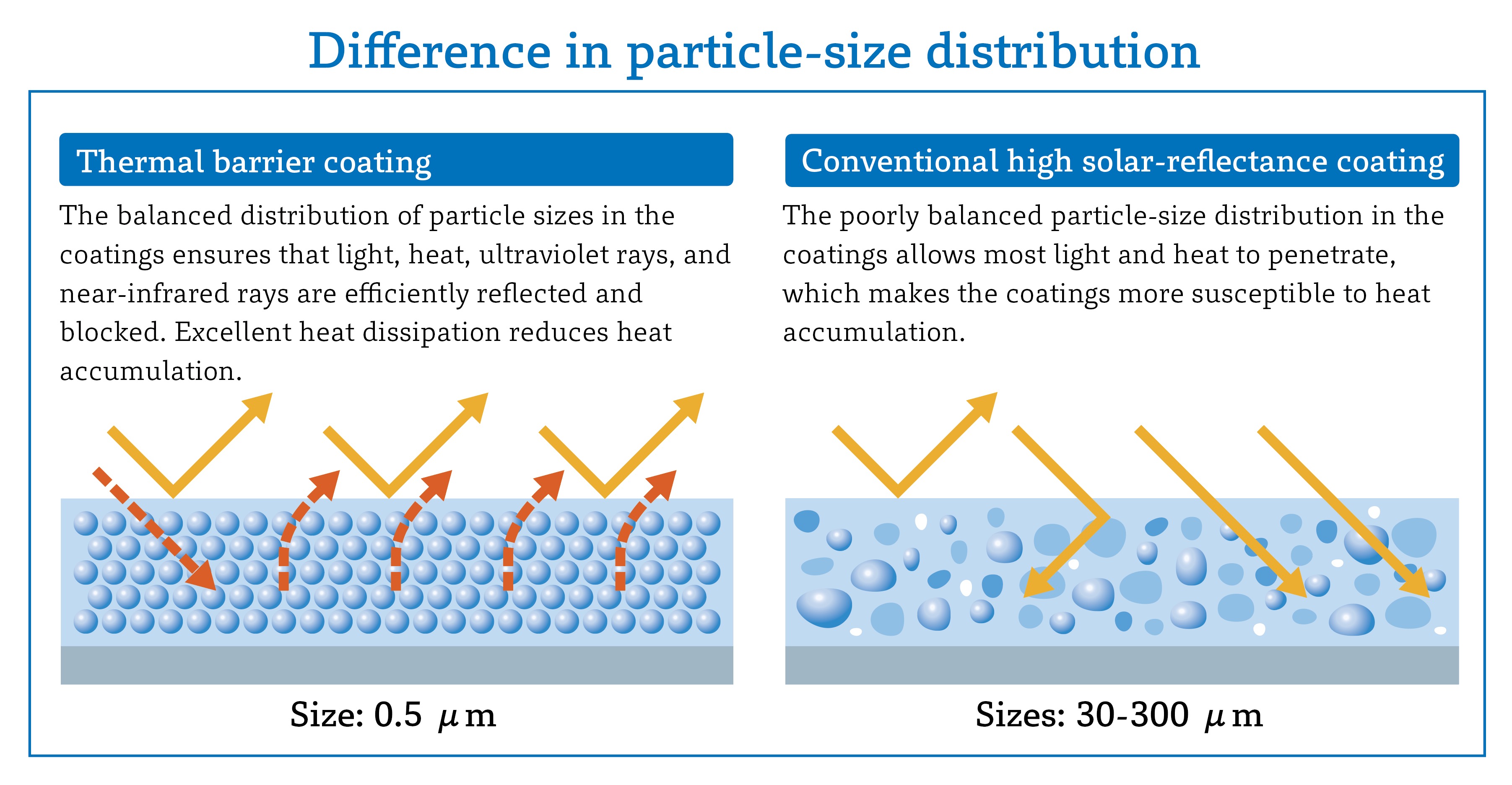
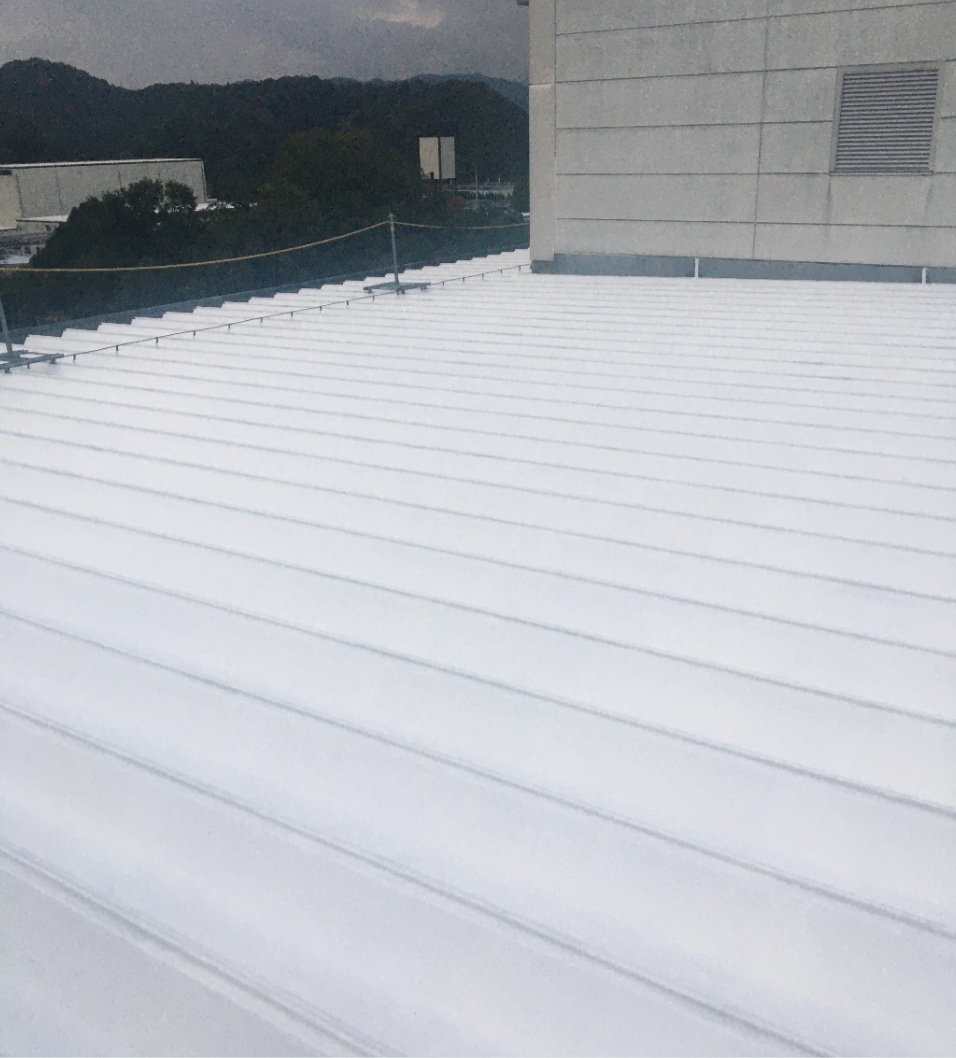
Segmented roof with a thermal barrier coating
Data on Greenhouse Gas EmissionsBack to Top
Greenhouse Gas Emissions
Scope 1 & 2 Greenhouse Gas Emissions
(subject to the Group medium-and-long-term environmental targets)
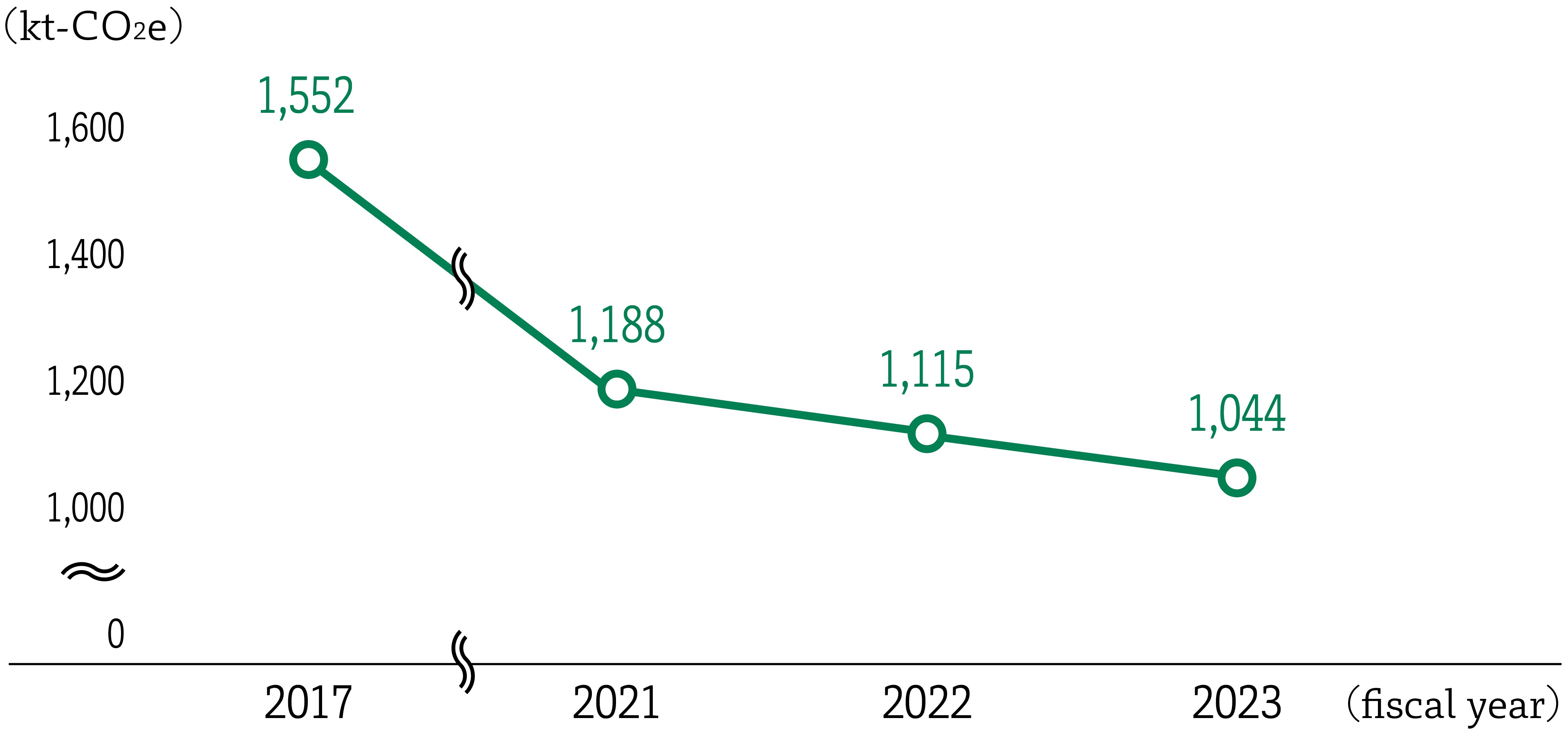
- *
- For Scope 1 & 2 emissions, greenhouse gas (GHG) emissions associated with electricity consumption at domestic sites are calculated using the adjusted emission factors according to the method specified in the Ministerial Ordinance Concerning the Calculation of Greenhouse Gas Emissions from the Business Activities of Specified Dischargers issued by the Ministry of the Environment (MOE) of Japan. The conversion factors used to calculate GHG emissions associated with electricity consumption at overseas sites are prioritized in the following order: 1) the factors independently set by the electric utilities from which Group sites purchase electricity, 2) the factors published by central and local governments, and 3) the latest factors published by the International Energy Agency (IEA). GHG emissions associated with fuel consumption, excluding electricity consumption, are calculated globally by the MOE method specified in the Ministerial Ordinance Concerning the Calculation of Greenhouse Gas Emissions from the Business Activities of Specified Dischargers.
Scope 3 Greenhouse Gas Emissions
(subject to the Group medium-and-long-term environmental targets)
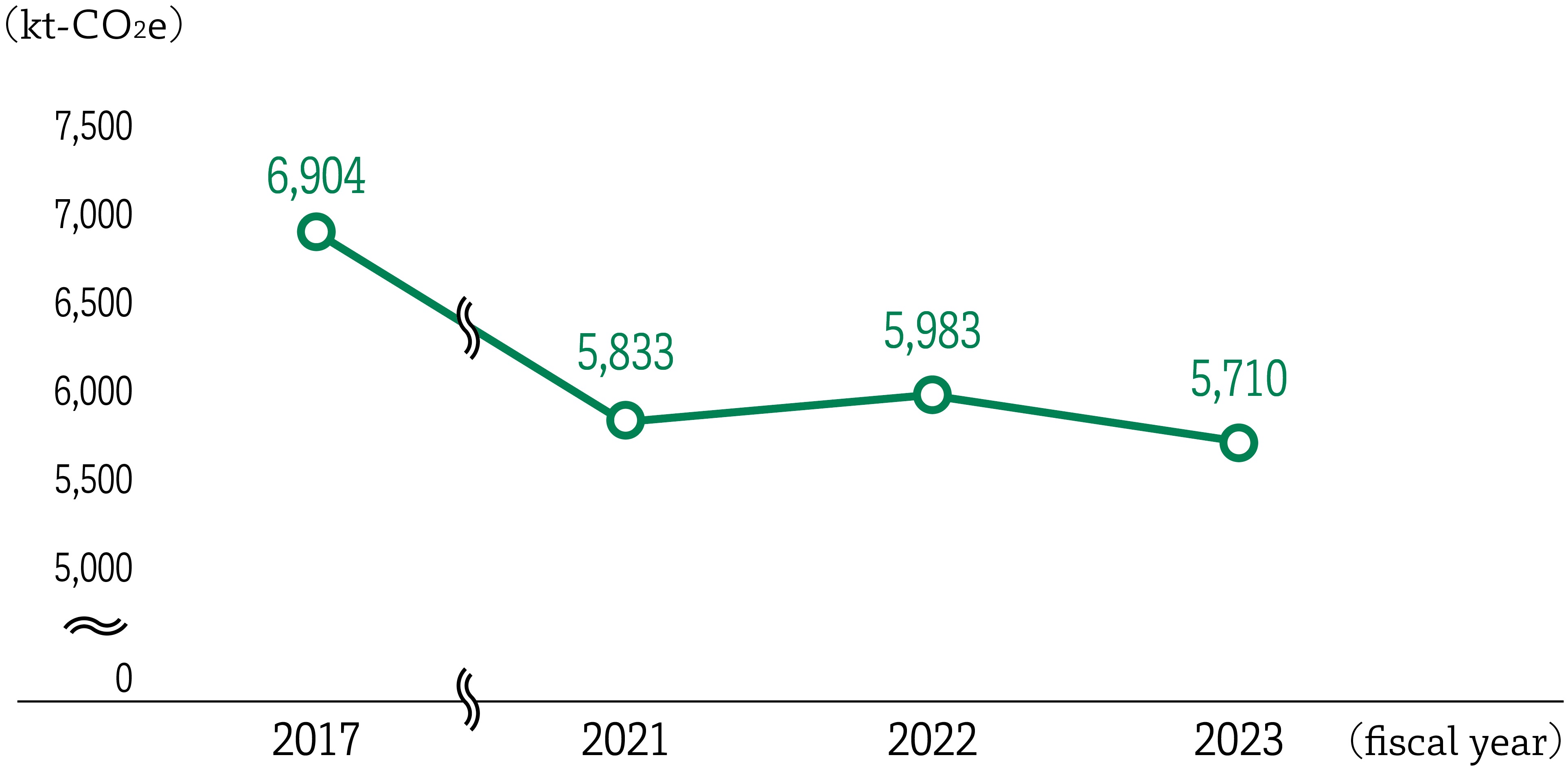
- *
- The results for fiscal 2017 and 2022 are adjusted based on the calculation methods applied to the fiscal 2023 results. (The results before the revision were 7,365 kt-CO2e and 5,929 kt-CO2e, respectively.)
Scope 1, 2, 3 Greenhouse Gas Emissions
Based on the fiscal 2023 results, TOPPAN calculated Groupwide Scope 3 greenhouse gas (GHG) emissions (indirect emissions not included in Scope 2, associated with business operations throughout the entire value chain of the Group) to identify the categories of corporate activity that emitted more GHGs and to establish priority targets in the Group’s GHG-emission reduction strategy. This calculation showed that several categories related to raw material consumption collectively accounted for the largest share of our GHG emissions, primarily: category 1 (manufacturing of products purchased by the Group), categories 4 and 9 (transportation and distribution of products purchased and sold by the Group), and category 12 (end-of-life treatment of products sold by the Group).
Calculating Scope 3 Greenhouse Gas Emissions
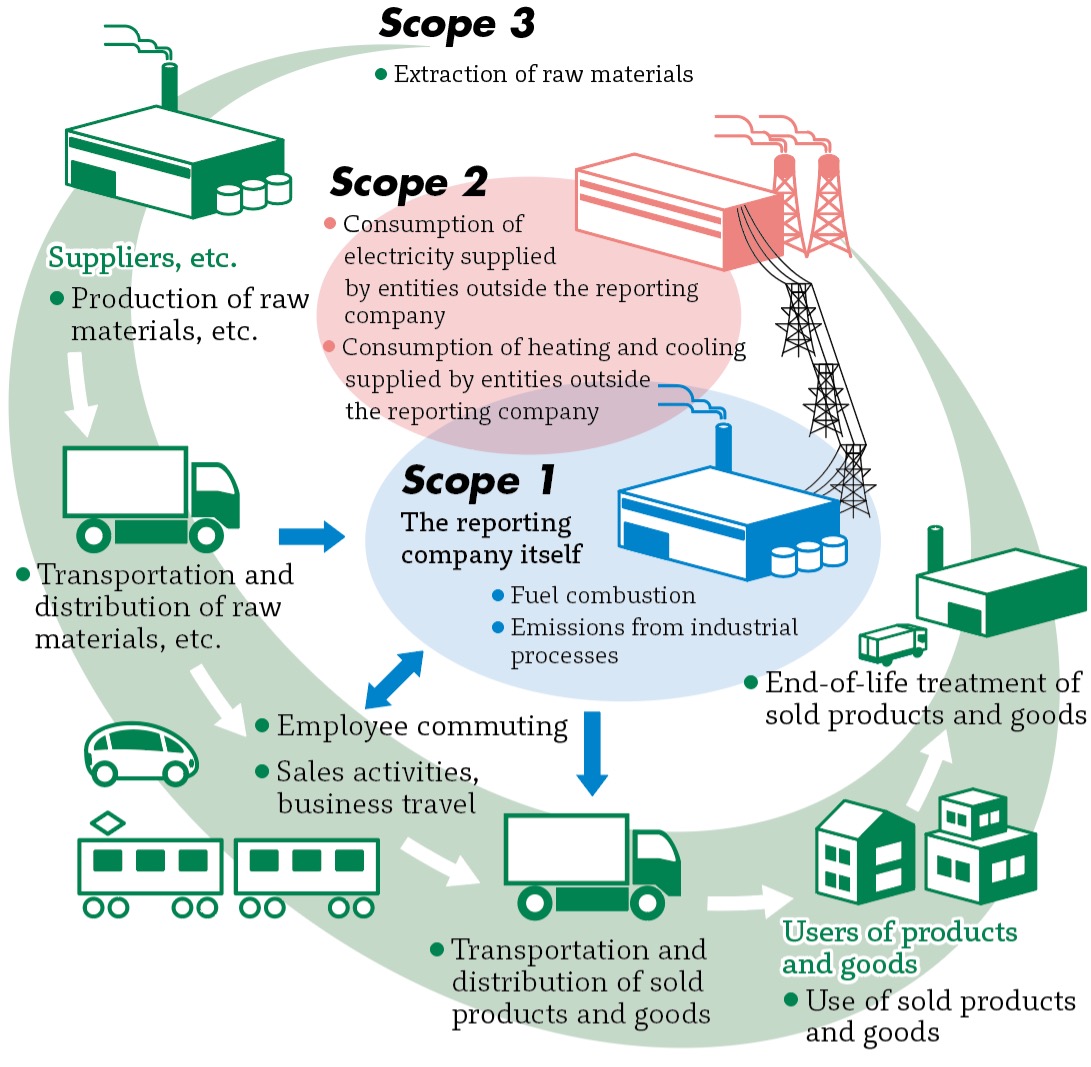
Scope 1, 2, 3 Greenhouse Gas Emissions (kt-CO2e)
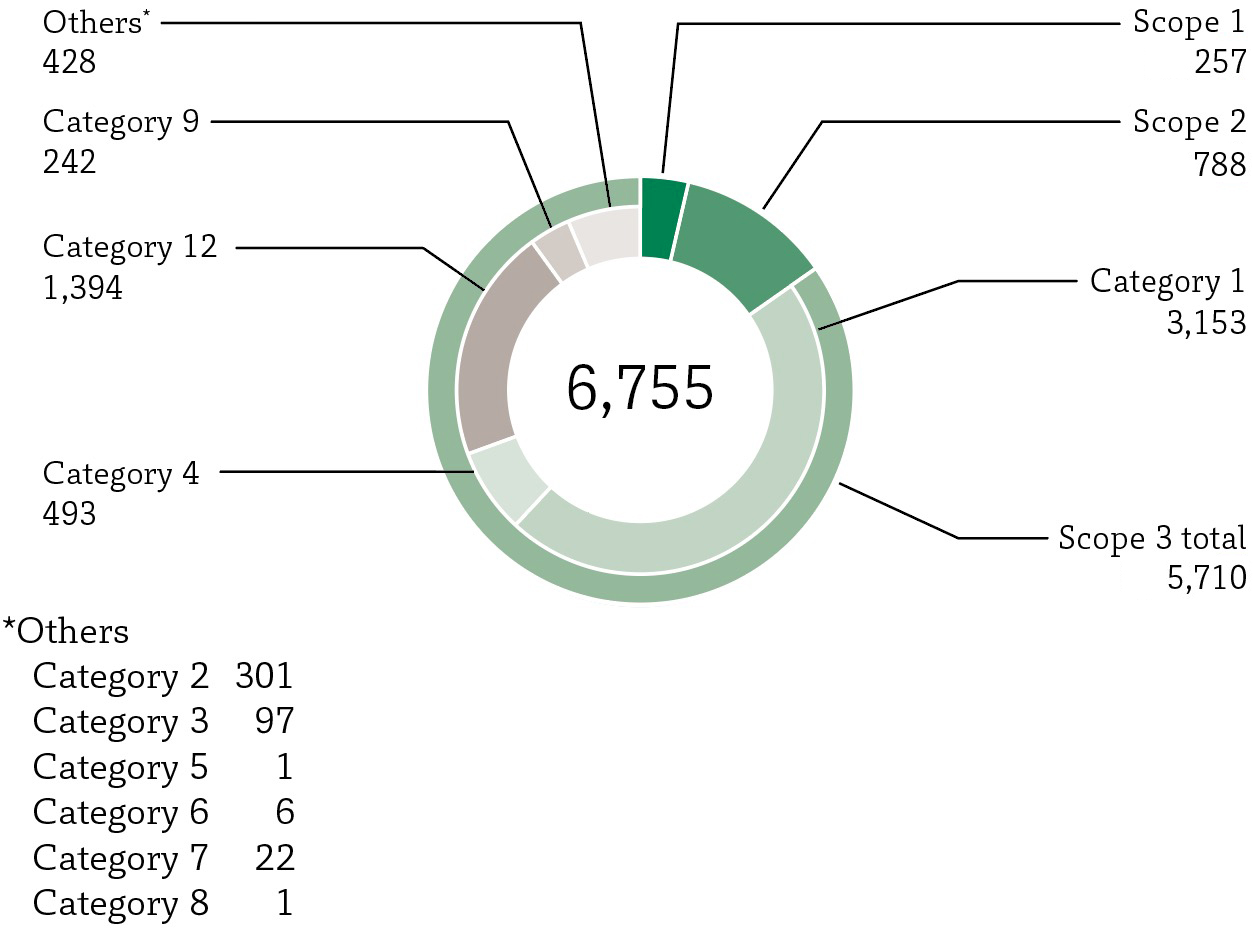
Percentages of Greenhouse Gas Emissions by Type
(in tons of CO2 equivalent)
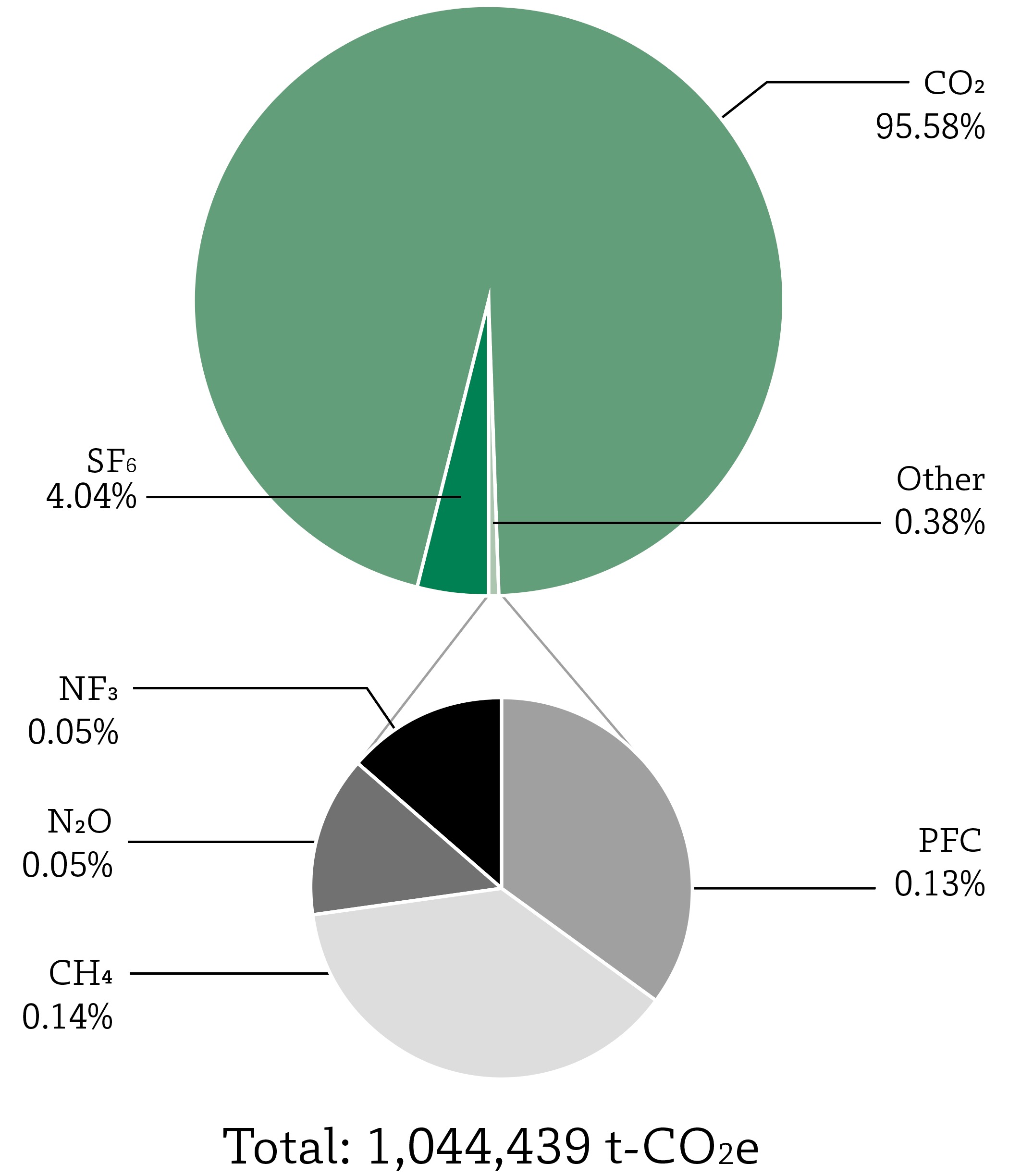
Percentages of Greenhouse Gas Emissions by Source
(in tons of CO2 equivalent)
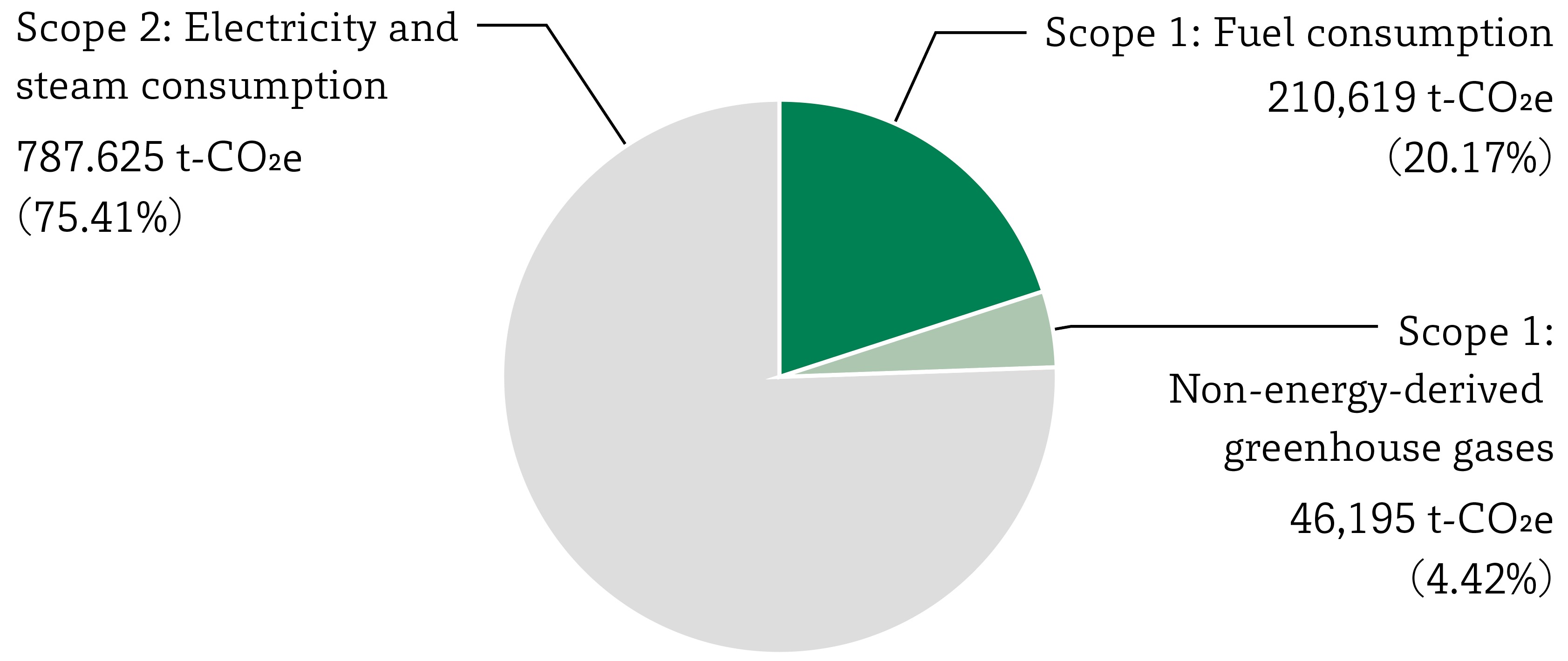
- Notes
-
- ・
- For Scope 1 & 2 emissions, greenhouse gas (GHG) emissions associated with electricity consumption at domestic sites are calculated using the adjusted emission factors according to the method specified in the Ministerial Ordinance Concerning the Calculation of Greenhouse Gas Emissions from the Business Activities of Specified Dischargers issued by the Ministry of the Environment (MOE) of Japan. The conversion factors used to calculate GHG emissions associated with electricity consumption at overseas sites are prioritized in the following order: 1) the factors independently set by the electric utilities from which Group sites purchase electricity, 2) the factors published by central and local governments, and 3) the latest factors published by the International Energy Agency (IEA). GHG emissions associated with fuel consumption, excluding electricity consumption, are calculated globally by the MOE method specified in the Ministerial Ordinance Concerning the Calculation of Greenhouse Gas Emissions from the Business Activities of Specified Dischargers.
- ・
- Fiscal 2023 GHG emissions from domestic sites (including Group company sites) and overseas sites are based on calculations of energy-derived CO2 emissions and non-energy-derived GHG emissions (namely, CO2, CH4, N2O, HFC, PFC, SF6, and NF3 emissions associated with dry etching, dry ice consumed, and fuel consumed in cogeneration systems). GHG emissions accounting for 0.01% or more of total emissions from these sites in CO2-equivalent values are included.
Calculated Level of Fluorocarbon Leakage (Fiscal 2023)
| Domestic Sites | 1,411t-CO2e |
|---|---|
| Overseas Sites | 1,851t-CO2e |
- Notes
-
- ・
- The value shown for domestic sites is calculated in conformance with the Act on Rational Use and Proper Management of Fluorocarbons enforced in April 2015 in Japan.
- ・
- The value shown for overseas sites is calculated by a method aligned with that prescribed under the Japanese act.
Values, Results, and Evaluation of Environmental Targets for Fiscal 2023
| Performance Target | Performance Indicator | Fiscal 2023 | ||||
|---|---|---|---|---|---|---|
| Target Value | Result | Achievement Rate | Evaluation | |||
| Contributing to decarbonization | Reduce CO2 emissions | Scope 1 & 2 greenhouse gas emissions | 1,109 kt-CO2e | 1,044 kt-CO2e | 105.9% | S |
| Scope 3 greenhouse gas emissions | 6,041 kt-CO2e | 5,710 kt-CO2e | 105.5% | S | ||
Evaluation criteria
S: Results achieved far surpass the targets (achievement rate [%] ≧ 105)
A: Targets achieved (100 ≦ achievement rate [%] < 105)
B: Activities fully carried out, but targets unachieved (70 ≦ achievement rate [%] < 100)
C: Activities insufficient (achievement rate [%] < 70)
Achievement rate: 200 – (values actually achieved / target values) x 100 [%]
Associated DataBack to Top
Energy Consumption
TOPPAN evaluates and discloses Groupwide performance data, including that from overseas Group subsidiaries.
Energy Consumption
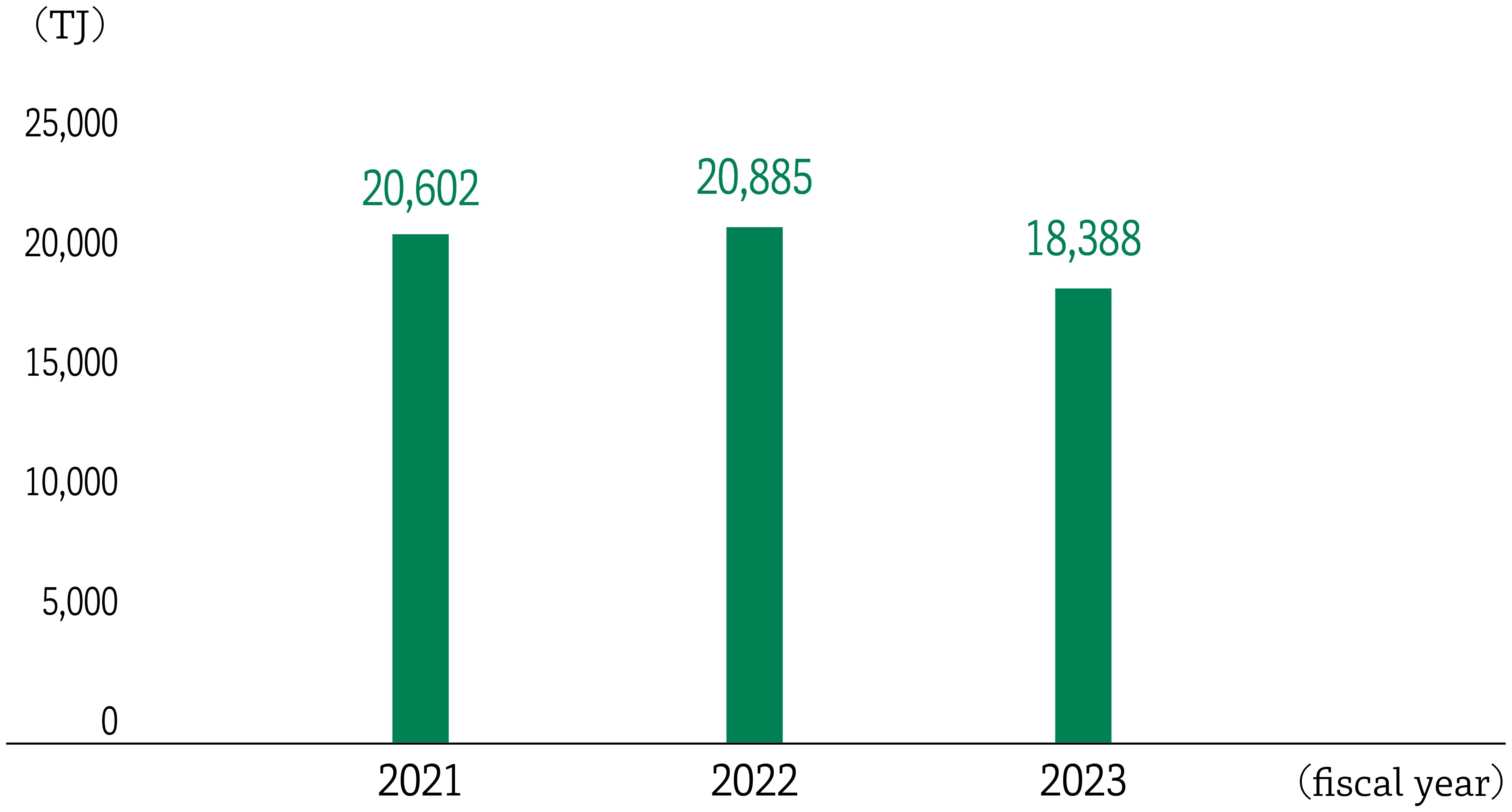
Electricity Consumption
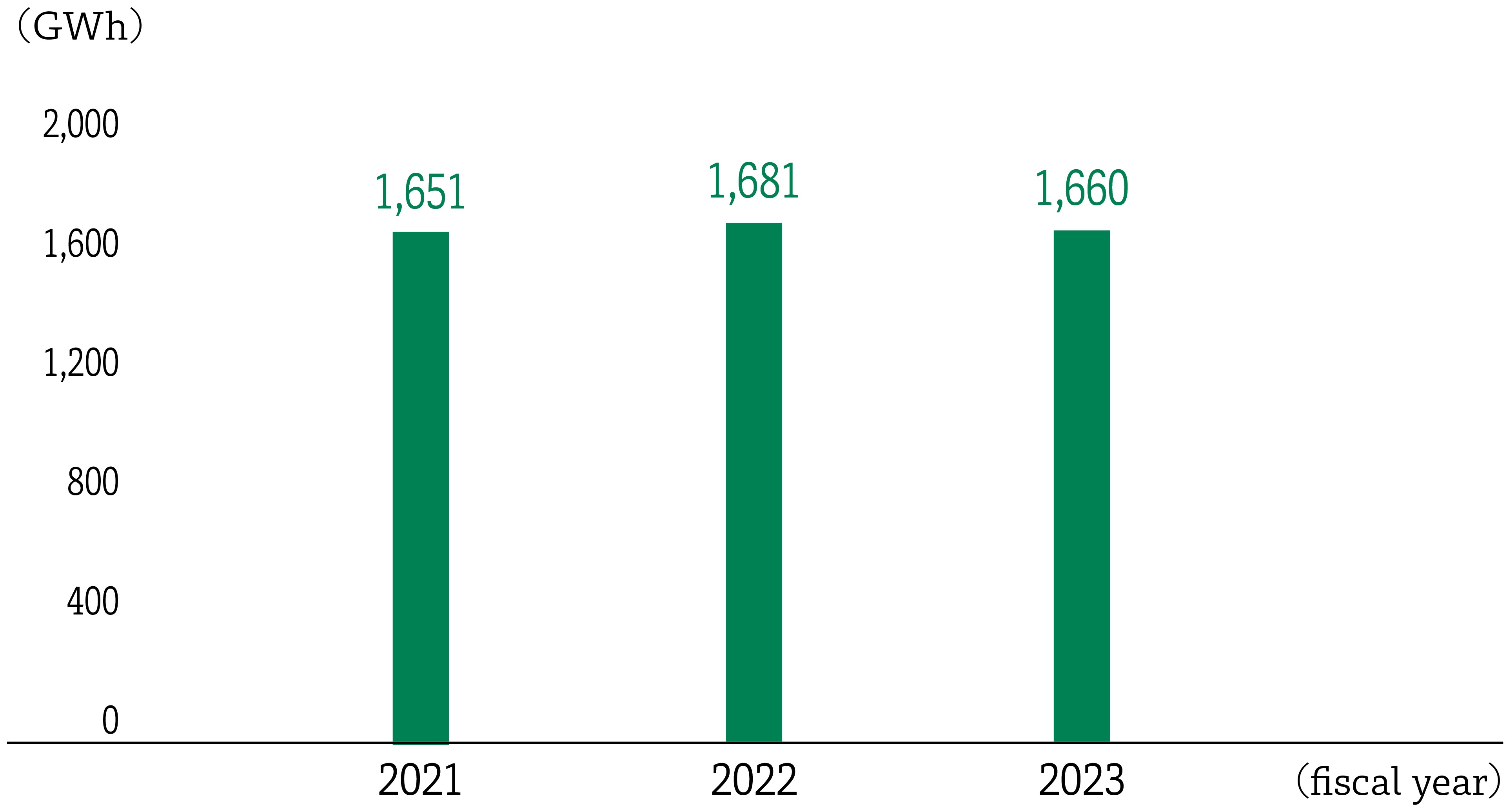
- *
- The fiscal 2023 result includes electricity derived from renewable energy sources.
Natural Gas Consumption
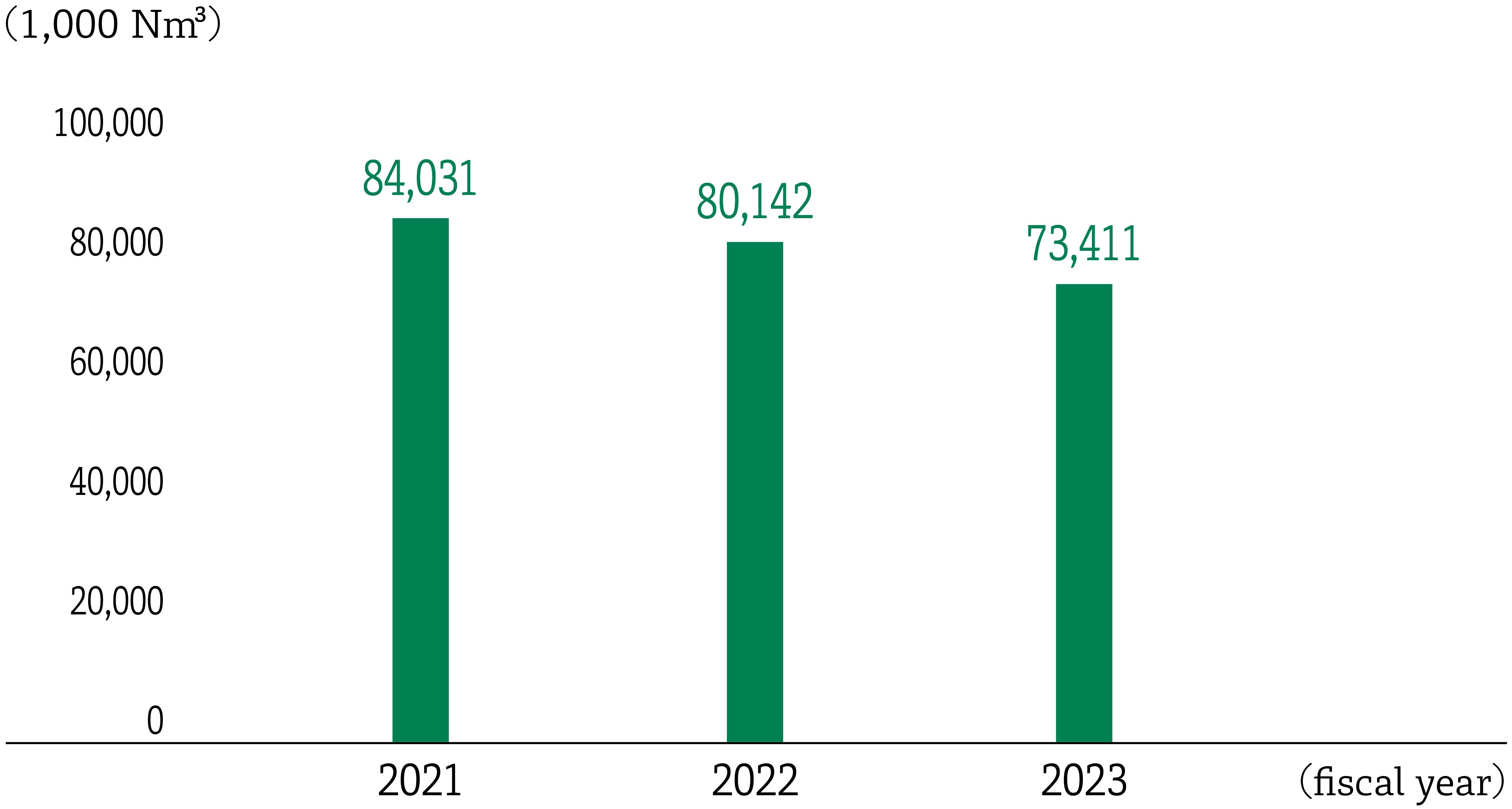
Kerosene Consumption
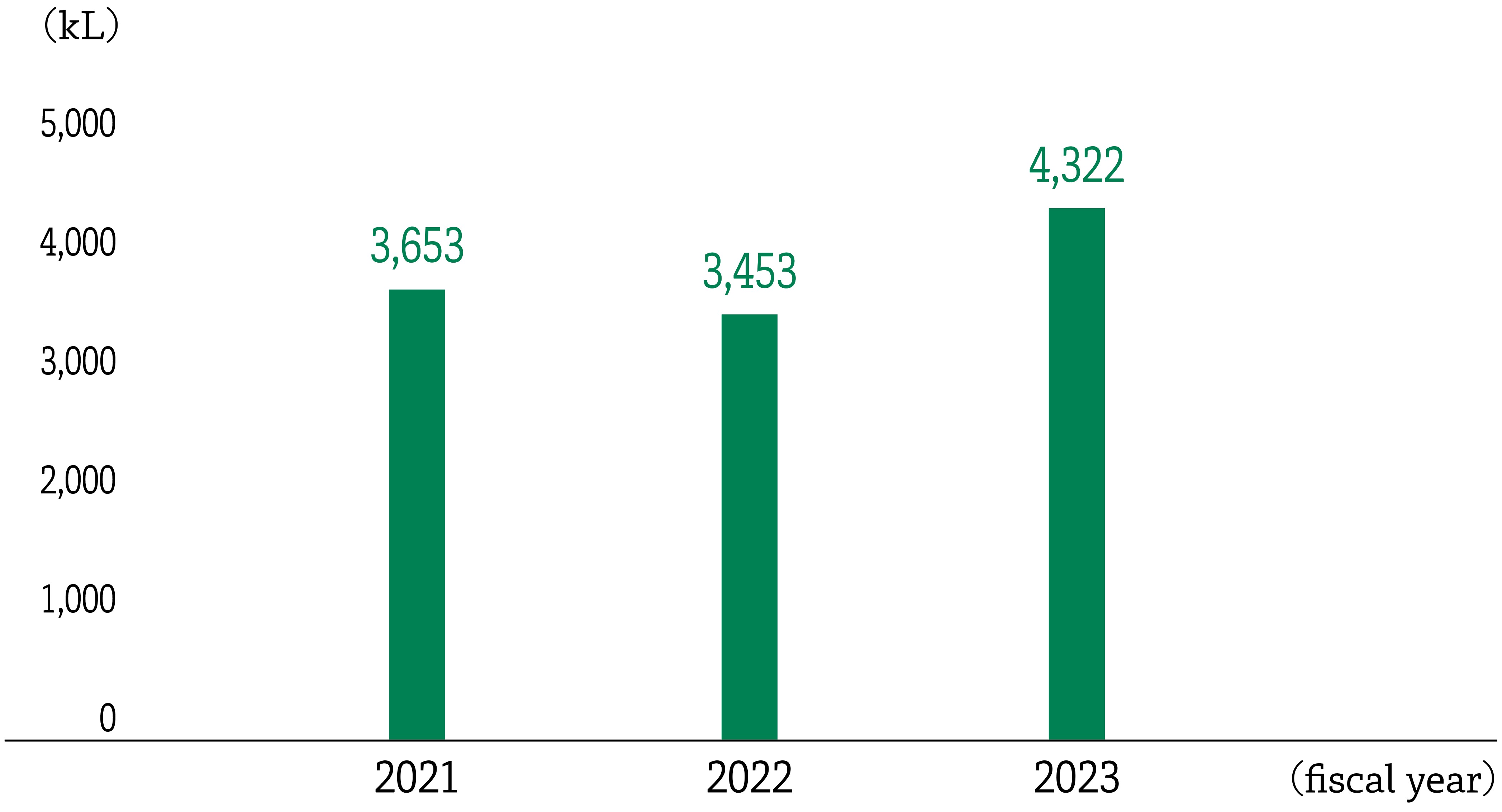
Renewable-derived Energy: Amount and Ratio
| Fiscal Year | Renewable-derived Energy (GWh/year) | Ratio (%) |
|---|---|---|
| 2021 | 11.10 | 0.67 |
| 2022 | 20.22 | 1.19 |
| 2023 | 41.81 | 2.52 |
- *
- Renewable-derived energy (electricity derived from renewable energy sources) is the renewable energy procured from PPA providers and electricity retailers plus the total energy generated at renewable energy power facilities (for solar power and hydro power) installed at Group sites.
- *
- The ratio of renewable-derived energy is the percentage of electricity derived from renewable energy sources out of our overall power consumption.
Fuel Efficiency of Outsourced Cargo Vehicles
